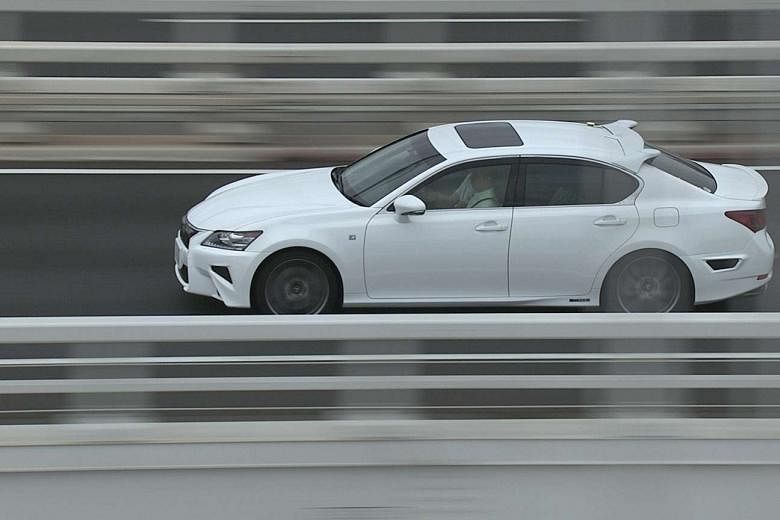It was the smoothest highway driving I had ever experienced as a passenger in Japan. And it was the car doing the driving, not the driver.
The test car was a Lexus GS450h hybrid saloon, specially modified to serve as a development vehicle (named Highway Teammate) for Toyota's automated driving technology (called Mobility Teammate Concept).
It looks like any white GS, but with weird little windows in its bumpers and a strange spoiler above its rear windscreen. These house some of the sophisticated sensors and radars that work with an array of cameras to enable the car to function as a co-driver.
And the vehicular co-driver functioned very well during the demonstration, conducted on a section of Tokyo's Shuto Expressway. It was not a closed course, so there were other road users around, unaware that this car was driving itself.
The distance was just a few kilometres, but the trip transported me a few years down the road, to a future where autonomous driving features will be as common as cruise control. In this case, it was a smooth cruise and the self-driving car was in control during the cruise, but only after the test driver behind the wheel pressed a button to activate the system.
Dedicated real-time infographics on the dashboard display showed what the car's autopilot was doing, accompanied by a gentle computerised female voice. She kept the cabin's occupants well informed, with periodic updates such as "Starting auto drive mode", "Changing lanes", "Merging into the right lane" and "Leaving the lane".
The car performed the lane- changing/merging/leaving like a skilled driver who had not only memorised the highway code, but also attended an advanced driving course. The manoeuvres were smooth, prompt and precise, at least in the light traffic situations we encountered during the demo.
The car also showed excellent lane discipline and maintained a safe, sensible gap to the vehicle in front.
The test driver could override the system anytime, but there was no need to. It did everything right, from the Fukuzumi entrance ramp after the electronic toll gate to the Ariake exit ramp at the next toll gate. Along the way, it also handled a fairly sharp, sweeping right turn so neatly that I could not have done it better myself.
Instinctively, I still helped the car and hands-free driver to keep a lookout en route for approaching cars, trucks and motorbikes. But the autonomous system already had that covered, gently reminding us to "beware of merging vehicles".
With 360-degree sensors to detect/track moving vehicles in the vicinity and nearby hazards (such as roadworks), computers to crunch the data correctly and automated driving controls to react appropriately, the system's situational awareness on the road was probably greater than mine.
In about five years, when Toyota and Lexus start equipping select models with automated driving technology, their early adopters should give credit to this particular R&D car. Because it was one of the very first vehicles to hit the highway this way.
• The writer is the editor of Torque, a motoring monthly published by SPH Magazines.

